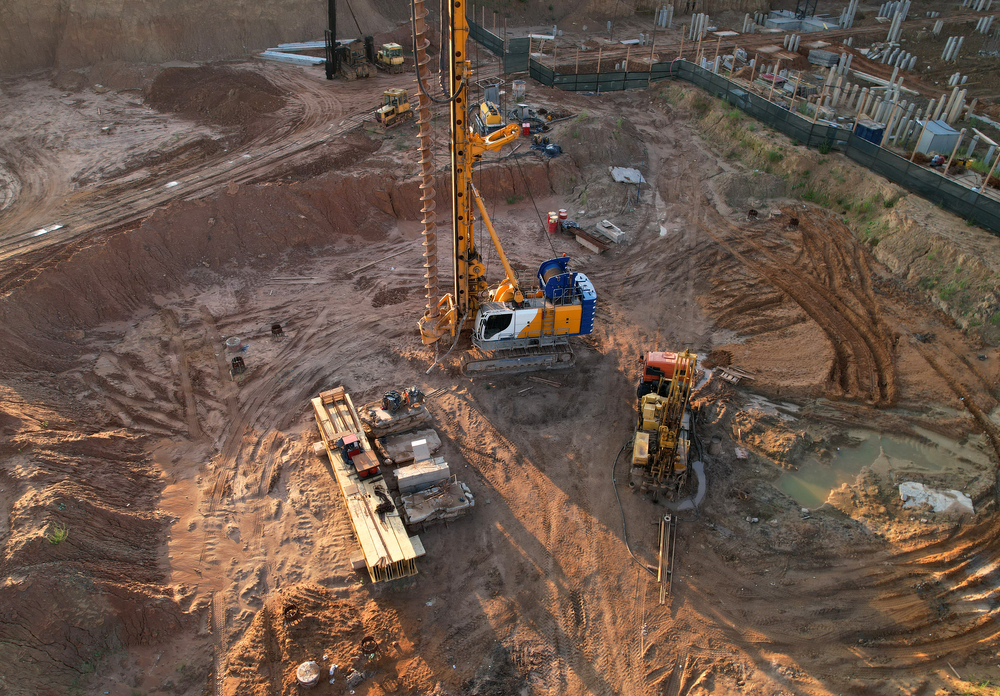Geotheta Fundamentals Explained
Geotheta Fundamentals Explained
Blog Article
Geotheta - Questions
Table of ContentsSome Ideas on Geotheta You Should KnowGeotheta Can Be Fun For AnyoneThe Single Strategy To Use For GeothetaGeotheta for DummiesSome Known Incorrect Statements About Geotheta

They carry out website investigations, accumulate samples, carry out research laboratory tests, and evaluate data to examine the suitability of the ground for construction projects - Geo Tech Engineer. Based upon their searchings for, geotechnical designers give recommendations for foundation style, slope stability, retaining structures, and reduction of geotechnical hazards. They work together with other experts, such as engineers, architectural engineers, and building and construction teams, to make sure that geotechnical factors to consider are incorporated right into the total job design and implementation
By examining the actions and properties of dirt and rock, they can recognize prospective geotechnical risks such as landslides, soil settlement, or slope instability. Their proficiency helps prevent failings or mishaps that might endanger lives and property. Below are some detailed responsibilities and responsibilities of a geotechnical designer: Site Examination: Geotechnical engineers conduct website examinations to collect data on subsurface conditions.
They translate the information to recognize the residential properties and behavior of the soil and rock, including their strength, permeability, compaction qualities, and groundwater problems. Geotechnical Analysis and Layout: Geotechnical engineers analyze the data collected during site examinations to analyze the security and suitability of the website for construction jobs. They do geotechnical calculations and modeling to review aspects such as bearing capacity, negotiation, slope stability, lateral earth stress, and groundwater circulation.
4 Simple Techniques For Geotheta
Foundation Layout: Geotechnical engineers play a critical duty in making structures that can safely support the designated framework. They analyze the soil conditions and load needs to figure out the ideal foundation type, such as superficial foundations (e.g., grounds), deep foundations (e.g (https://www.storeboard.com/geotheta)., heaps), or specialized methods like dirt renovation. They take into consideration aspects such as negotiation limitations, birthing capability, and soil-structure interaction to develop optimal foundation layouts
They review building and construction strategies, monitor website activities, and perform field examinations to confirm that the design recommendations are followed. If unexpected geotechnical issues occur, they examine the situation and supply referrals for remediation or modifications to the style. Risk Analysis and Reduction: Geotechnical engineers assess geotechnical threats and risks related to the task site, such as landslides, liquefaction, or dirt disintegration.

Collaboration and Communication: Geotechnical engineers function very closely with other specialists involved in a project, such as designers, architectural designers, and building teams. Reliable interaction and partnership are important to integrate geotechnical factors to consider right into the total task layout and building procedure. you could try here Geotechnical designers offer technological competence, solution queries, and make sure that geotechnical demands are met.
Geotheta for Dummies
Below are some kinds of geotechnical designers: Structure Designer: Structure designers specialize in making and evaluating structures for frameworks. They assess the soil conditions, load needs, and website attributes to figure out the most suitable structure type and design, such as shallow foundations, deep foundations, or specialized techniques like heap structures.
They examine the variables affecting incline security, such as dirt properties, groundwater conditions, and slope geometry, and establish techniques to avoid slope failings and mitigate risks. Earthquake Engineer: Quake designers concentrate on examining and developing structures to hold up against seismic pressures. They examine the seismic danger of a site, review soil liquefaction potential, and create seismic layout requirements to ensure the safety and resilience of frameworks during earthquakes.
They carry out area screening, gather samples, and evaluate the gathered information to characterize the soil buildings, geologic developments, and groundwater conditions at a website. Geotechnical Instrumentation Designer: Geotechnical instrumentation engineers concentrate on surveillance and determining the habits of dirt, rock, and frameworks. They install and keep instrumentation systems that keep track of aspects such as dirt negotiation, groundwater levels, slope activities, and architectural variations to assess efficiency and offer early warnings of potential issues.
10 Easy Facts About Geotheta Shown
They conduct examinations such as triaxial tests, loan consolidation tests, straight shear tests, and leaks in the structure tests to collect information for geotechnical analysis and style. Geosynthetics Designer: Geosynthetics designers concentrate on the design and application of geosynthetic products, such as geotextiles, geogrids, and geomembranes. They utilize these materials to boost dirt security, strengthen slopes, give drainage remedies, and control disintegration.
They tend to be investigative individuals, which indicates they're intellectual, introspective, and curious. They are interested, methodical, sensible, logical, and rational. Some of them are also social, suggesting they're kind, charitable, participating, patient, caring, helpful, understanding, tactful, and pleasant - Geo Tech Engineer.
In the office environment, geotechnical designers use specialized software devices to do estimations, produce styles, and analyze data. They prepare reports, evaluation project specifications, communicate with clients and employee, and coordinate project activities. The office setup supplies a helpful atmosphere for research study, evaluation, and collaboration with other specialists associated with the job.
Little Known Facts About Geotheta.
They frequently see task websites to conduct website examinations, analyze geotechnical conditions, and collect information for evaluation. These check outs entail taking a trip to different places, sometimes in remote or tough surfaces. Geotechnical engineers might carry out soil tasting, conduct examinations, and display construction tasks to ensure that the geotechnical aspects of the task are being carried out appropriately.
Geotechnical engineers likewise function in specialized geotechnical research laboratories. In these facilities, they conduct experiments, execute examinations on dirt and rock examples, and examine the engineering residential properties of the materials. Geotechnical research laboratory designers work thoroughly in these environments, dealing with testing tools, running tools, and videotaping information. They team up with various other laboratory staff to guarantee precise and trusted screening outcomes.
Report this page